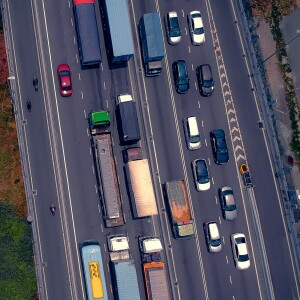
Friday Aug 25, 2023
Using cars, trucks and trains in new ways to save the planet.
Fires, floods, storms. Even if you’re not sure about whether carbon emissions are behind them, why not try something new for our kids just in case?
Let’s start with transportation since about 30 percent of United States greenhouse gas emissions come from the transportation sector. That’s driven by Americans’ everyday use of cars, trucks, trains and planes.
I spoke with Ned Ryan Doyle, a self-taught expert in what people can do to reduce our carbon footprint. His DIY approach shows it’s easier to do than you might think.
Nearly 60 percent of transportation-related greenhouse gas emissions come from cars and light-duty trucks and 23 percent from medium-to-heavy-duty trucks.
There are at least two natural drivers of transportation-related carbon emissions.
First, cities and suburbs were built when gas was cheap, seemingly in infinite supply, and we were not feeling the effects of climate change. Today, gas is expensive and the impact of carbon emissions is clear.
Suburbia makes driving inevitable. How do we optimize our driving in it?
Second, the wealthier a family is, the larger its carbon emissions. According to Oxfam and the Stockholm Environmental Institute, the world's wealthiest 10% were responsible for around half of global emissions in 2015.
This is because of the natural tendency to buy a larger home, more cars, and boats. All that requires energy, which for the most part, comes from boring fossil fuels.
Chances are, if you are reading this, you fit into both of these situations and can do something to reduce your transportation-related footprint.
First, the Covid-19 pandemic proved we can work from home, which reduces the use of cars and, therefore, carbon emissions. We should advocate for our employers to continue to allow a significant amount of time to work from home.
Second, buy new and used electric cars and trucks. In addition to reducing carbon emissions, the total cost of owning an electric vehicle can save thousands of dollars over three years.
Car and Driver compared total costs of electric and gas-fueled Hyundais and Ford F-150s, including maintenance, energy use, gas, charging, depreciation and tax credits: https://www.caranddriver.com/shopping-advice/a32494027/ev-vs-gas-cheaper-to-own/
The EPA also has a calculator to customize your analysis: https://afdc.energy.gov/calc/
Third, plan your local trips and vacations. Pretend you get ONLY two trips out of the house a week. What are the places and things you need, like groceries and prescriptions? What are the best times of day and routes to travel?
Chances are you don’t need at least one of your cars for hauling things and people around town. Buy an electric vehicle and rent a larger car, like an SUV, for vacations.
Fourth, reduce the use of long-haul trucks by expanding the rail system and use of it. On average, rail is four times more fuel efficient than trucks, and emits 75% fewer greenhouse gases. Imagine highway driving with fewer trucks!
Fifth, deploy electric-powered long-haul trucks to fill in the routes trains can’t cover and expand the use of electric delivery trucks, e.g. postal vehicles and those with the Amazon, FedEx and UPS logos.
All of this will drive up the availability of long-haul and car charging stations, which is currently a bottleneck in the uptake of electric vehicles, especially in rural areas.
Imagine having electric charging stations just like we have gas stations along the highway.
Changing our driving and habits and transportation usage is possible. The technology is available for us to reduce carbon emissions. Why not give it a shot?
No comments yet. Be the first to say something!